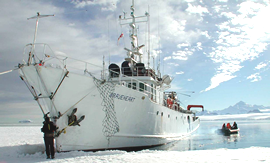By day, they dive. And by night, they sort fish. Every evening the fish team are out on the back deck, processing fish samples. They have a well-oiled routine, and each person knows their job. By this stage of the process the fish have already been sorted into species, or ‘lots’.
First in line is Mark, who is chief note-taker. He keeps a ledger with all the details such as station number, lot number, fish names, and the number of specimens going to each of the three participating museums (Auckland Museum, Te Papa, and the Australian Museum). Later in the evening all this information is transferred to computer.
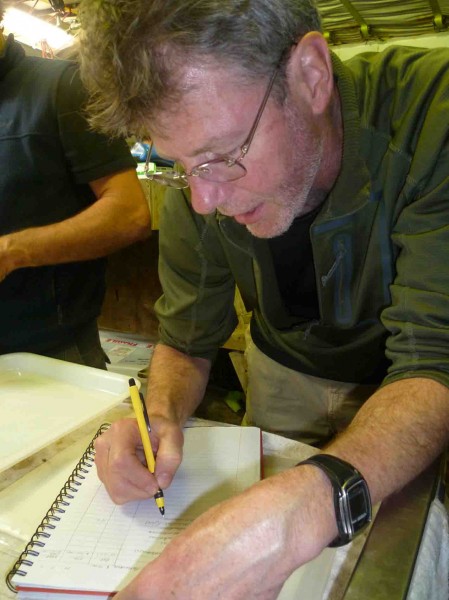
Chief note taker – Mark records all the specimens’ details and where they are going
Next along on the chain gang is Stephen Ullrich – he measures each fish (and Mark records its length), and puts each museum’s specimens into a ziplock plastic bag, along with an all important piece of paper which has the station and lot numbers.
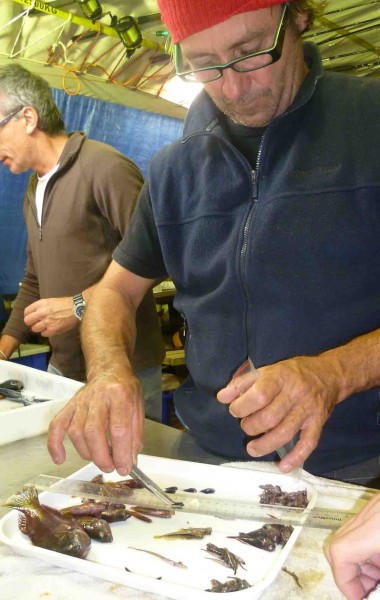
Stephen’s responsible for measuring and ziplock-bagging the fish
Tom is in charge of individually tagging the larger fish that are destined for Auckland Museum, so that they are permanently marked.
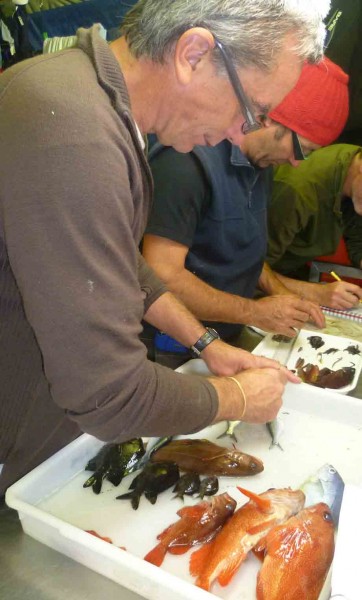
Tom tags the larger fish noting which ones are going to Auckland Museum
By this stage, the fish team have decided which fish they want to take tissue samples from, and which are going straight into formalin. The fish to be tissue sampled are given to Charles, whose job it is to remove a small bit of flesh from the right side of the fish.
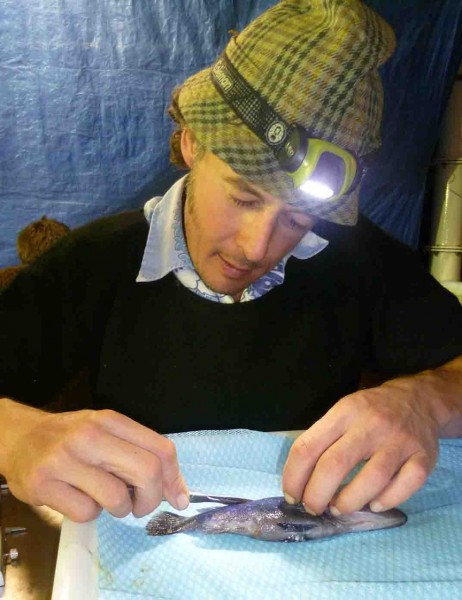
Fish sampling – Charles has to remove a small bit of flesh from the right side of fish selected for sampling
Vincent is in charge of putting the tissue in a small vial, making sure it has its all important label, and recording all the details in another register. These samples can be later used for genetic work.
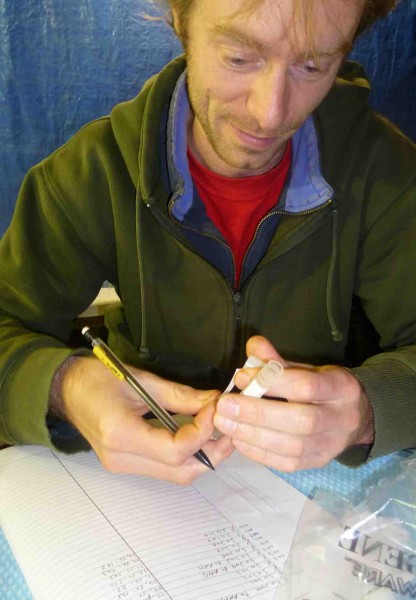
Vincent puts the tissue samples into vials and records them in a register
Ged has the job of pinning out the fins of specimens that are to be photographed – all fish are always photographed on their left side (which is why the tissue sample was taken from the right side). This is why fish posters such as you might see in your local fish and chip shop usually have all the fish facing left! Then the fish goes to Carl to be photographed (a process that we covered in a video in an earlier blog).
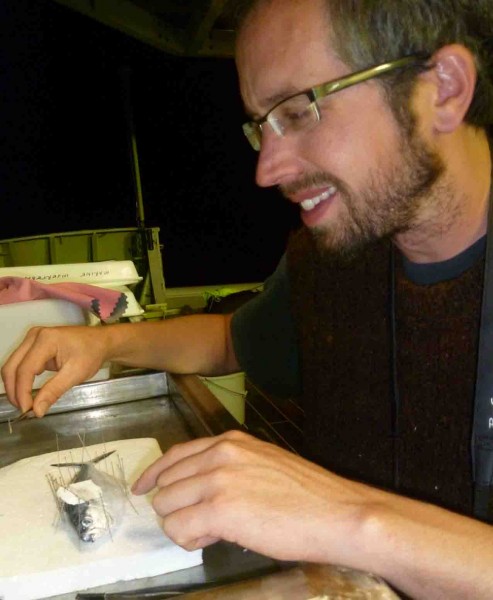
Pin work – Ged pins the fish ready to be photographed. Fish are photographed on their left and samples taken from their right so you won’t see any missing bits!
By the time the fish team go to bed, every precious fish is known, measured and has a home to go to. And as a result of their hard work here, anyone looking at those fish in the future will know exactly where the fish came from, and where any other specimens might be lodged. So, it’s a job well done!












